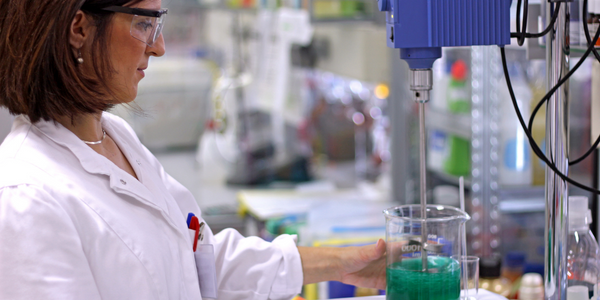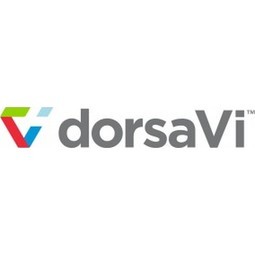Download PDF
Improving Factory Worker Posture

Applicable Functions
- Discrete Manufacturing
Use Cases
- Onsite Human Safety Management
Services
- Training
The Challenge
A 49 year old factory worker with long-standing low back pain was referred to a ViMove clinic for assessment and treatment. The worker’s low back pain had been managed and resolved with acupuncture in the past. The patient reported severe low back pain worse in the morning after prolonged rest. He also had trouble straightening up and experienced constant stiffness and pain.
About The Customer
A 49 year old factory worker with long-standing low back pain
The Solution
ViMove Low Back Live Training and visual feedback were used to work on the patient’s anterior tilt while sitting and posterior tilt while standing. The Live Training assessment helped the patient understand how to move correctly during his daily activities.
Furthermore the assessment reports were able to clearly show the patient what his postural and movement issues were. The patient was prescribed exercises to perform at home which focused on reducing tone in the lumbar extensor muscles and practicing isolated anterior and posterior pelvic tilt movements.
Furthermore the assessment reports were able to clearly show the patient what his postural and movement issues were. The patient was prescribed exercises to perform at home which focused on reducing tone in the lumbar extensor muscles and practicing isolated anterior and posterior pelvic tilt movements.
Operational Impact
Related Case Studies.

Case Study
Wearables for Connected Workers
Together, Honeywell and Intel have developed a IoT proof of concept (PoC) for the Connected Worker. The Connected Worker can take many forms - factory laborer, mine worker, first responder, firefighters and more. For each environment and worker role, a different selection of sensors may be appropriate to provide the most meaningful IoT-fueled dataset to represent that individual worker asset. As with most IoT solutions, it is critical to avoid being overwhelmed by a steady stream of meaningless data. Rather, it is essential to send select actionable intelligence to the cloud for visualization and customized alert notifications. The downside is that data from individual wearable devices - if viewed independently - can potentially cause false alarms and contribute to inefficiencies in a manpower as a result. Fusing sensor technology with big data processing (hub/gateway), analytics - all in the cloud - is the key to improving local intelligence as well as remote visualization of actionable intelligence.

Case Study
Underground Mining Safety
The goal was to produce a safety system to monitor and support underground mining operations; existing systems were either too simple (i.e. phone line) or overly complex and expensive, inhibiting deployment, and providing little-to-no support in event of an accident. Given the dangerous nature of the mining work environment and the strict regulations placed on the industry, the solution would have to comply with Mine Safety and Health Administration (MSHA) regulations. Yet the product needed to allow for simple deployment to truly be a groundbreaking solution - increasing miner safety and changing daily operations for the better.

Case Study
Facility Management Solution in Construction Industry
In the construction of Crown Towers in Perth, hundreds of workers enter and exit the construction site each day, totalling into thousands by the completion of the project. All of these workers perform different tasks and come from different agencies, making it difficult for supervisors to track who does what, when, and where on such a large-scale site. An easy-to-use access, security and facility management solution was required.

Case Study
Industrial Workforce Mobility for Improved Safety & Operations
Huntsman Corporation, a global manufacturer and marketer of differentiated chemicals, undertook an aggressive program to eliminate injuries, product defects, and environmental releases at their Port Neches facility. Termed “Project Zero”, this program required a completely mobile solution to empower operations and maintenance personnel to capture defects, track work progress and make process and safety related decisions in real-time.

Case Study
WEST TEXAS GAS TRUSTS WIN-911 ALARM NOTIFICATION SOFTWARE
It became clear that the SCADA system was not an infallible means ofmonitoring field stations; the systems would sometimes lose connection with the host computer. This caused delays in personnel response to alarms and increased the risk of severe warnings not being received before corrective actions could be implemented. As a precaution, the alarm points had to be visually monitored and staff would be required to call the appropriate personnel if an alarm came through. Regulations wereestablished for timely reporting. The management at West Texas Gas quickly determined that a secondary alarm support system needed to be installed. They were seeking something that would be able to monitor variable tags from the OPC server as well as monitor custom tags that were built into the existing SV32 SCADA system to observe and report flare volumes.

Case Study
Reducing Operating Costs And Improving Safety
To ensure safe operation of the nuclear plant, the Institute of Nuclear Power Operations sets the performance objectives and defines the criteria (PO&C) to meet those objectives. The plant personnel manually compare each line item in the CAP report against the PO&C to evaluate the seriousness of the event. A spilled cup of coffee in the wrong place might not be too serious, while a critical pump leaking that has the potential to shut down the plant is another matter entirely. This manual process of classifying the seriousness of each item in a CAP report lies at the heart of the continuous effort to improve the safety and operation of the nuclear power plant, but requires significant time and resources. Our client needed a way to automate the classification process to increase its efficiency and to extract information from years of reported events to better understand their causes and anticipate possible adverse events.





